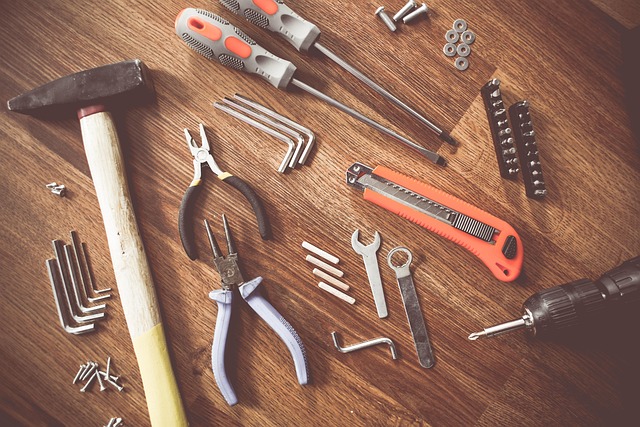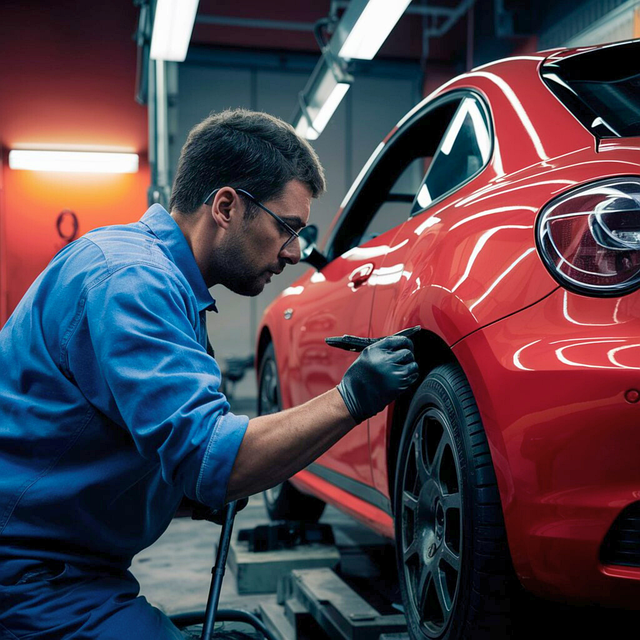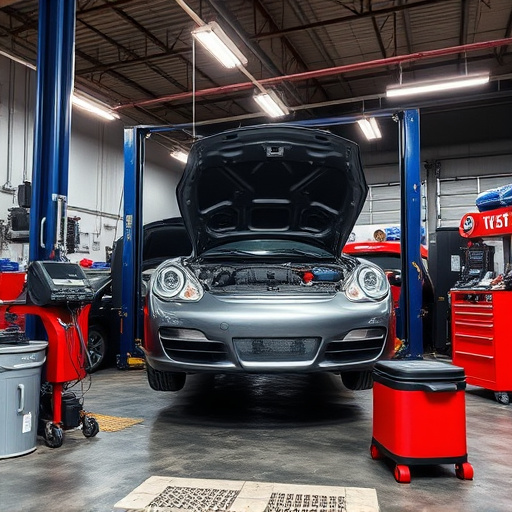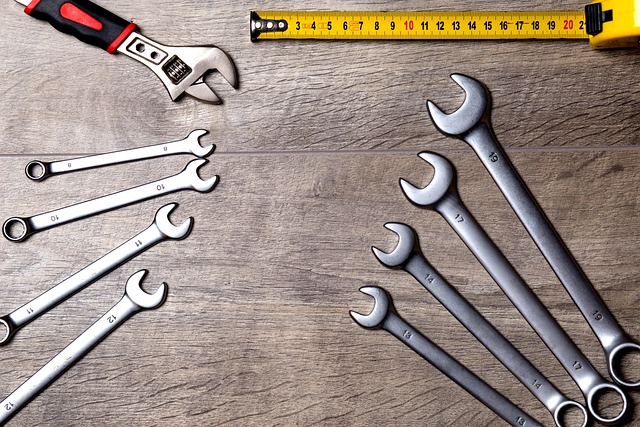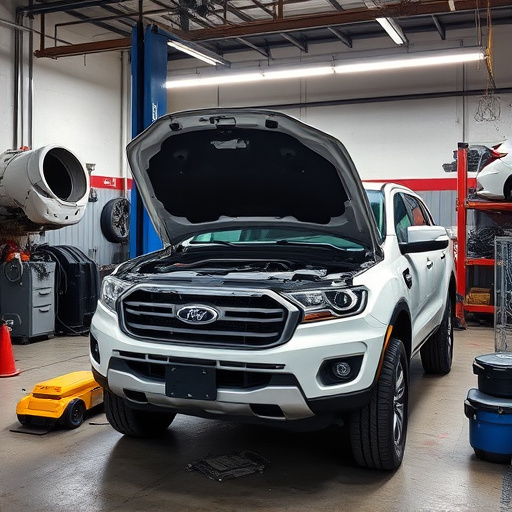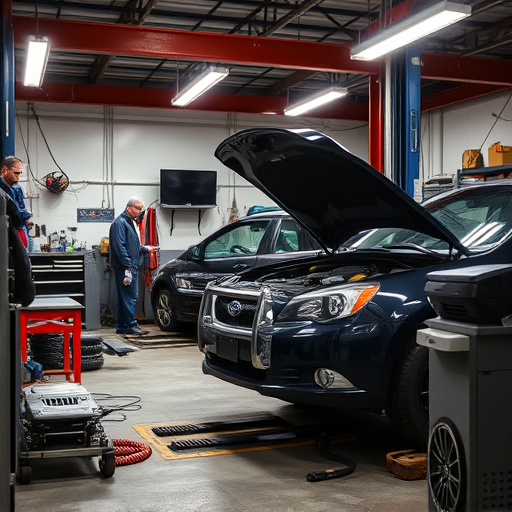Mercedes carbon fiber parts repair combines scientific expertise with skilled craftsmanship. The meticulous process involves preparing the damaged area, cutting new pieces, and using specialized techniques for seamless integration. Proper storage in a clean, dry, and temperature-controlled environment is crucial for maintaining structural integrity and aesthetics. Long-term protection includes regular cleaning, moisturizing, climate control, and inspections to prevent damage like cracking or delamination.
“Maintaining the pristine condition of your Mercedes’ carbon fiber components after a repair is crucial. This guide delves into the intricacies of storing repaired Mercedes carbon fiber parts, ensuring optimal preservation. From understanding the unique materials and repair processes to implementing best practices for long-term maintenance, we provide essential insights. Learn how to protect these high-end components, preserving their beauty and performance for years to come, specifically tailored to meet the needs of Mercedes enthusiasts.”
- Understanding Mercedes Carbon Fiber Parts Repair: Materials and Process
- Storage Considerations for Optimal Preservation After Repair
- Best Practices for Long-Term Maintenance and Protection of Repaired Carbon Fiber Components
Understanding Mercedes Carbon Fiber Parts Repair: Materials and Process

Mercedes carbon fiber parts repair involves a meticulous process that combines advanced materials science and skilled craftsmanship. The key to successful repair lies in understanding the unique properties of carbon fiber, which offers exceptional strength-to-weight ratio but requires specialized techniques for damage restoration. This material is typically used in high-end automotive components like bodies, fenders, and spoilers due to its lightweight nature and superior durability.
The repair process involves several steps, including meticulous preparation, such as removing loose fibers and damaged resin, followed by precise cutting and shaping of new carbon fiber pieces to match the original specifications. Next, a specialized auto body restoration technique is applied to bond the repaired area seamlessly with the surrounding unharmed material. This often includes using high-quality adhesives and advanced auto painting techniques to ensure a flawless finish that matches the vehicle’s original aesthetics. Reputable collision centers specializing in Mercedes carbon fiber parts repair employ these practices to restore damaged components to their like-new condition, preserving the integrity and value of the vehicle.
Storage Considerations for Optimal Preservation After Repair

When storing repaired Mercedes carbon fiber parts, proper considerations are crucial for maintaining optimal preservation. Carbon fiber is a delicate material that requires specific conditions to retain its strength and aesthetics. Firstly, ensure a clean and dry storage area, free from direct sunlight or extreme temperatures. The environment should be controlled, with consistent humidity levels to prevent warping or fading. A collision center or dedicated repair facility offers ideal conditions for short-term storage, but for extended periods, specialized warehouses with climate control are recommended.
Additionally, it’s essential to handle these parts with care. Utilize soft, acid-free cloths or breathable bags for wrapping and storage. Avoid stacking heavy items on top of carbon fiber parts, as pressure can cause indent removal and damage the surface. Consider custom storage solutions that accommodate the unique shape and structure of these parts, ensuring they remain in pristine condition until needed. Incorporating car paint services expertise into storage protocols can further safeguard against any potential issues, guaranteeing Mercedes carbon fiber parts repair stays impeccable.
Best Practices for Long-Term Maintenance and Protection of Repaired Carbon Fiber Components

To ensure long-term maintenance and protection of repaired Mercedes carbon fiber components, it’s essential to implement best practices tailored to this specialized material. Carbon fiber is known for its lightweight strength, but unlike metal, it requires meticulous care to preserve its structural integrity. Begin with regular cleaning using mild, pH-neutral detergents to remove any dirt or debris, preventing the buildup of contaminants that can weaken the fibers. Moisturizing the repaired area with a high-quality automotive wax not only adds a protective layer but also helps maintain the carbon fiber’s glossy finish.
Storage in a clean, dry environment is crucial to prevent environmental damage. Extreme temperatures and humidity levels can degrade the material over time. Consider storing repaired parts in a climate-controlled garage or warehouse. Additionally, avoid stacking heavy objects on top of carbon fiber components to minimize the risk of compression or damage during long-term storage. Regular inspection is vital; check for signs of cracking, delamination, or corrosion, addressing any issues promptly through an auto body shop specializing in Mercedes carbon fiber parts repair.
When storing repaired Mercedes carbon fiber parts, proper preservation techniques are key to ensuring their longevity. By understanding the unique materials and repair process involved, along with implementing optimal storage considerations, you can significantly extend the life of these valuable components. Regular long-term maintenance and protection practices will further safeguard your restored carbon fiber pieces, keeping them in pristine condition for years to come. Remember, proper care ensures that repaired Mercedes carbon fiber parts not only look their best but also perform at peak levels.





